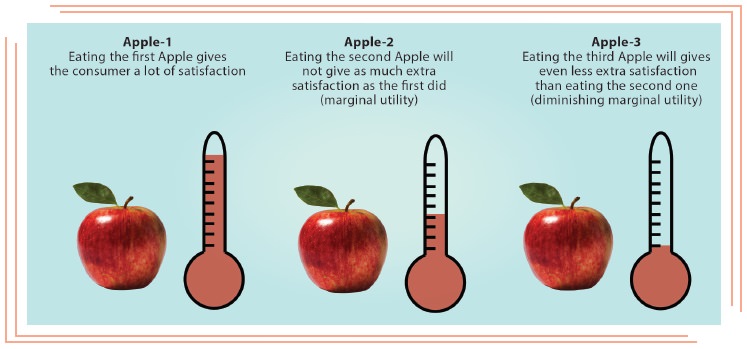Economics - The Law of Diminishing Marginal Utility (DMU) | 11th Economics : Chapter 2 : Consumption Analysis
Chapter: 11th Economics : Chapter 2 : Consumption Analysis
The Law of Diminishing Marginal Utility (DMU)
Cardinal Utility Analysis
The Law of
Diminishing Marginal Utility (DMU)
Introduction
H.H.Gossen,
an Austrian Economist was the first to formulate this law in Economics in 1854.
Therefore, Jevons called this law as “Gossen’s First Law of Consumption”. But
credit goes to Marshall, because he perfected this law on the basis of Cardinal
Analysis. This law is based on the characteristics of human wants, i.e., wants
are satiable.
Definition
Marshall
states the law as, “the additional benefit which a person derives from a given
increase of his stock of a thing, diminishes with every increase in the stock
that he already has”.
Assumptions
1.
Utility can be measured by cardinal numbers such as
1, 2, 3 and so on.
2.
The marginal utility of money of the consumer
remains constant.
3.
The consumer should be a rational consumer and his
aim is to attain maximum satisfaction with minimum expenditure.
4.
The units of the commodity consumed must be
reasonable in size.
5.
The commodity consumed should be homogeneous or
uniform in character like weight, quality, taste, colour etc.
6.
The consumption of goods must take place
continuously at a given period of time.
7.
There should be no change in the taste, habits,
preferences, fashions, income and character of the consumer during the process
of consumption.
Explanation
The Law
of Diminishing Marginal Utility states that if a consumer continues to consume
more and more units of the same commodity, its marginal utility diminishes.
This means that the more we have of a thing, the less is the satisfaction or
utility that we derive from the additional unit of it.
Illustration
The law
can be explained with a simple illustration. Suppose a consumer wants to
consume 7 apples one after another. The utility from the first apple is 20. But
the utility from the second apple will be less than that of the first (say 15),
the third less than that of the second (say 10) and so on. Finally, the utility
from the fifth apple becomes zero and the utilities from sixth and seventh
apples are negative (or disutility or disliking). This tendency is called the

“The Law of Diminishing Marginal Utility’.
Table 2.1 The Law of Diminishing Marginal Utility

In Table
2.1, we find that the total utility goes on increasing but at a diminishing
rate. On the other hand, marginal utility goes on diminishing. When marginal
utility becomes zero, the total utility is maximum and when marginal utility
becomes negative, the total utility diminishes.

Criticisms
1.
Utility cannot be measured numerically, because
utility is subjective.
2.
This law is based on the unrealistic assumptions.
3.
This law is not applicable to indivisible
commodities.
Exceptions to the Law
1. Hobbies 2.
Drunkards 3. Misers 4. Music and Poetry and 5. Readings
Importance or Application of the Law of DMU
1.
The Law of DMU is one of the fundamental laws of
consumption. It has applications in several fields of study.
2.
This law is the basis for other consumption laws
such as Law of Demand, Elasticity of Demand, Consumer’s Surplus and the Law of
Substitution etc.
3.
The Finance Minister taxes a more-moneyed person
more and a less-moneyed person less. When a person’s income rises, the tax-rate
rises because the MU of money to him falls with every rise in his income. Thus,
the Law of DMU is the basis for progressive taxation.
4.
This law emphasises an equitable distribution of
wealth. The MU of money to the more-moneyed is low. Hence, redistribution of
income from rich to poor is justified.
5.
Adam Smith explains the famous “diamond-water
paradox”. Diamond is scarce, hence, its MU is high and its price is high, even
though it is not very much needed. Water is abundant, hence, its MU is low and
its price is low, even though it is very much essential.
Related Topics